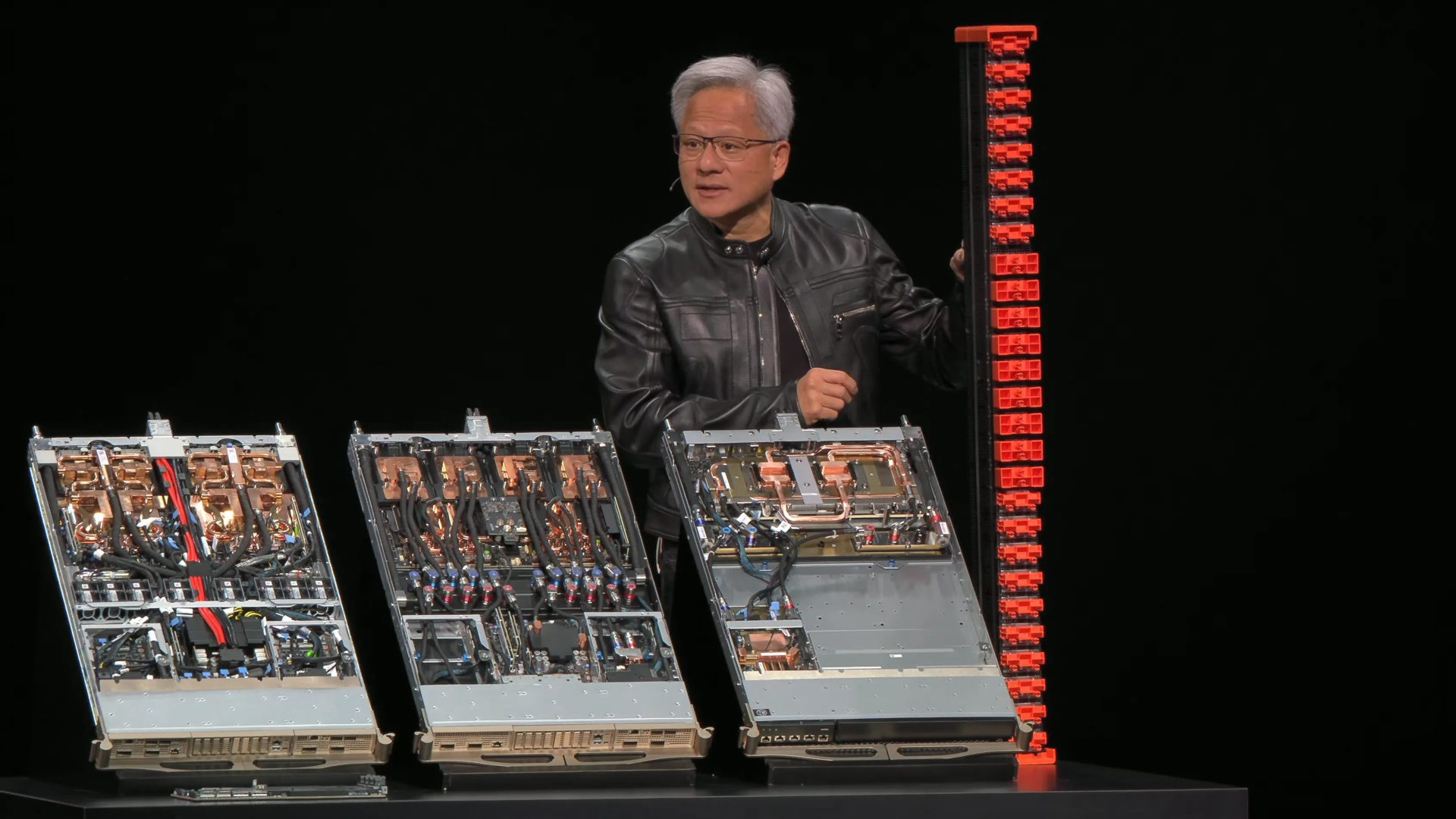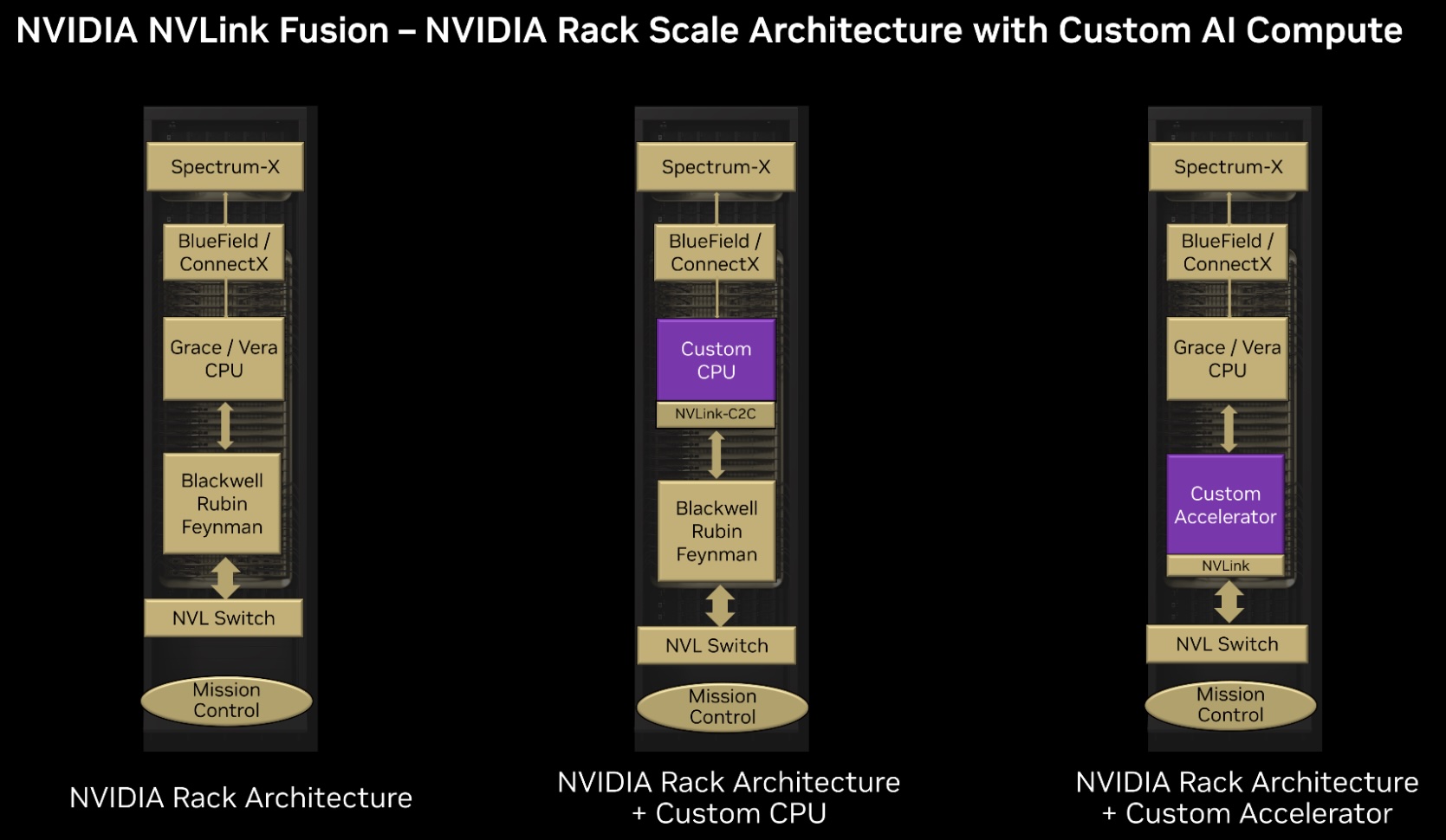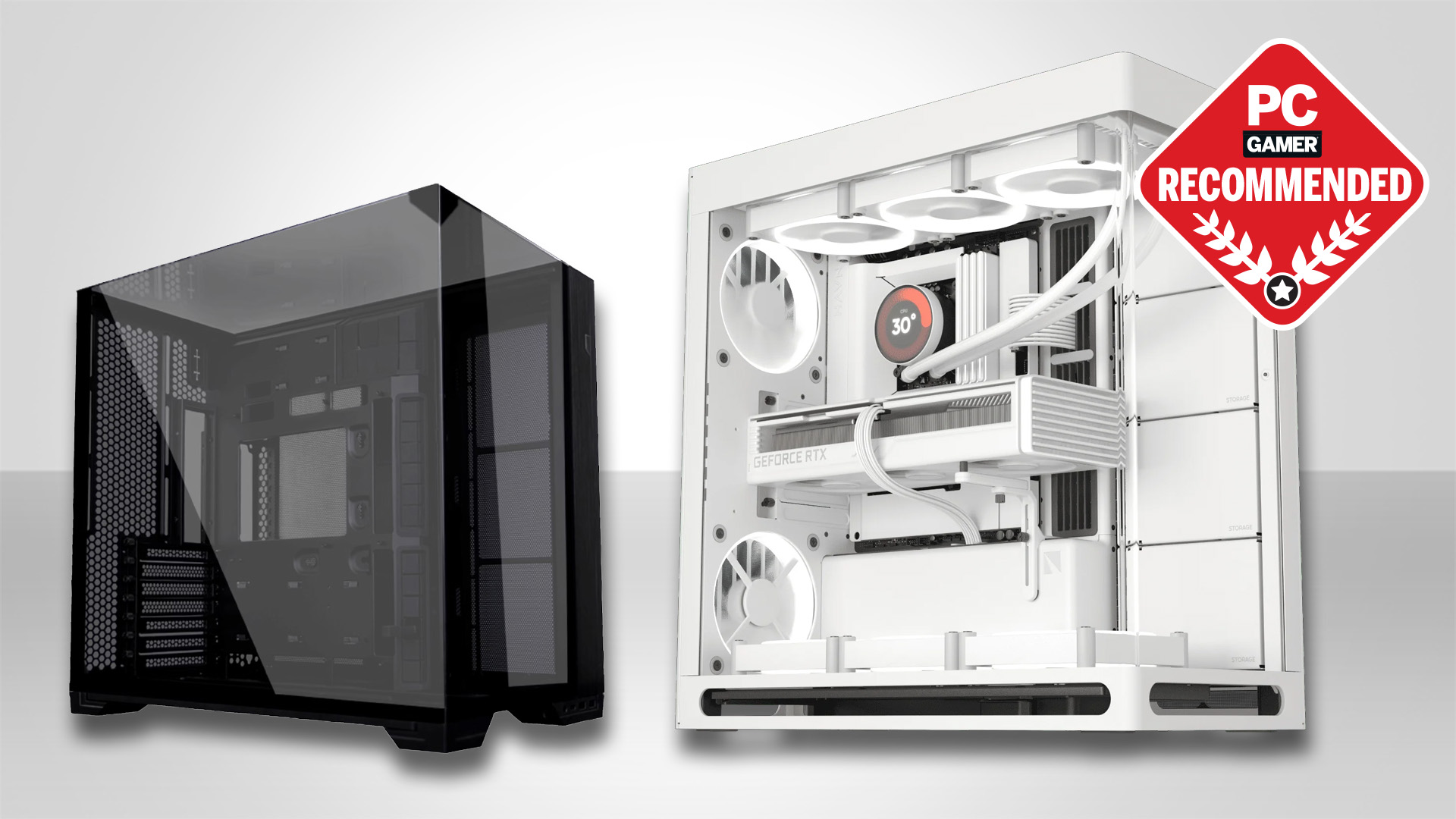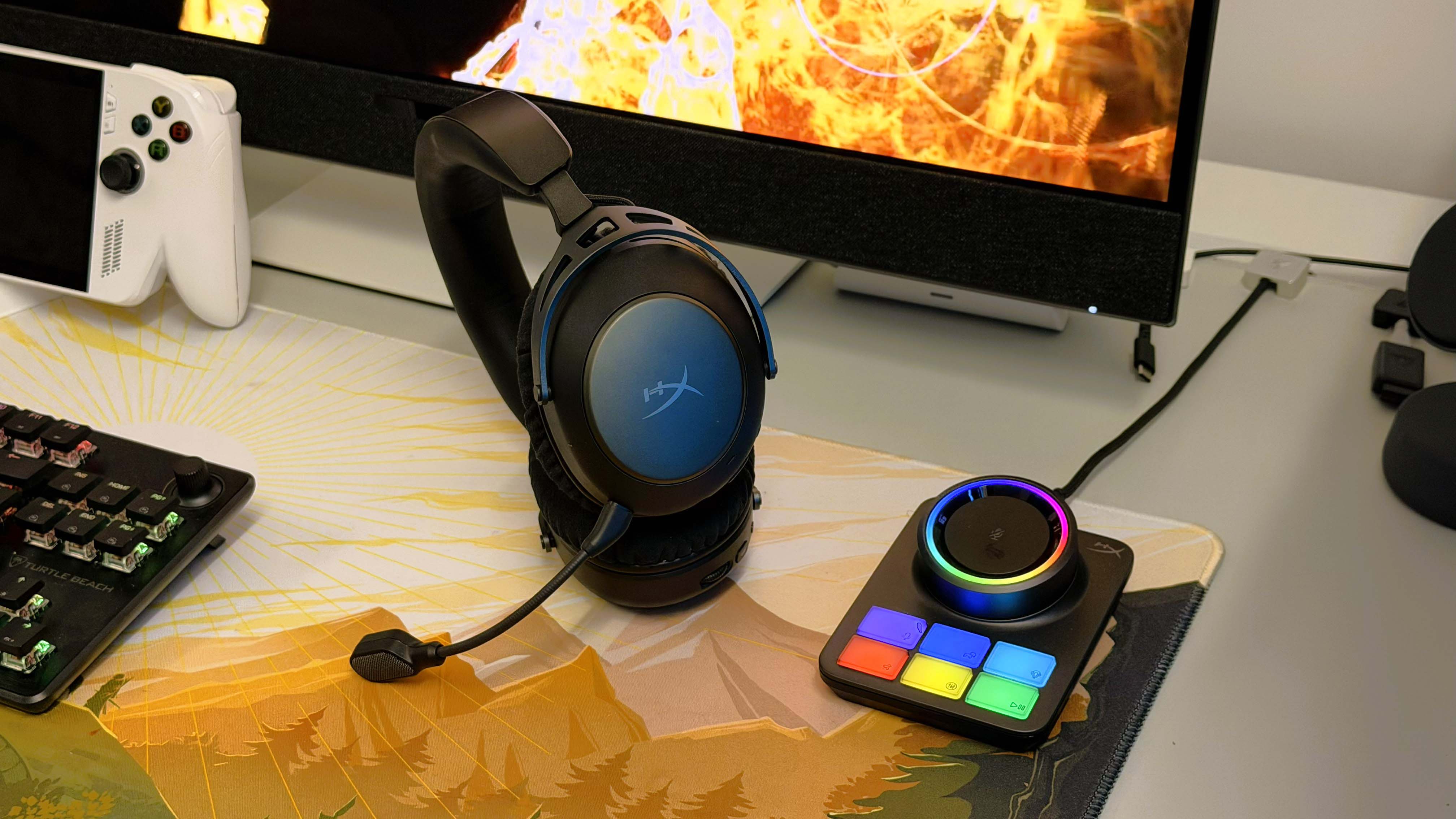Nvidia's Jen-Hsun Huang boasts that one spine of its new NVLink Fusion tech can 'move more traffic than the entire Internet'
And unusually for Nvidia tech, it'll work with other vendors' CPUs, too.

Tech CEOs proclaiming unfeasibly large numbers at the launch of a new product is par for the course in the industry, and it's common practice to take them with a pinch of salt until someone's tested them. Even so, Nvidia's Jen-Hsun Huang was perhaps hoping for a bigger reaction at Computex when he claimed that one spine of its new NVLink Fusion system "moves more traffic than the entire Internet."
NVLink is Nvidia's processor interconnect technology, mostly used in big data centers, packed full of CPUs and GPUs. Its latest version, NVLink Fusion, was announced at this year's Computex event and during the presentation, Huang hauled an NVLink spine onto the table. Think of this as a tower of cables and controllers that allows 72 massive GPUs to communicate and share data.
That single spine apparently can transfer data at a rate of up to 130 TB/s, which, according to Huang, is more data per second than the entire Internet shifts about. That particular figure, he says, is 900 Tb/s (note: small b = bits, large B = bytes), so the spine is transferring about 16% more data.
That does sound like a ridiculously impressive figure, but it's somewhat meaningless. Not least being that other sources claim the peak Internet data transfer rate is over 1,200 Tb/s.
Then you have things like Nvidia's RTX 5090, which has a peak L1 cache transfer rate of 50 TB/s—sure, that's way less than an NVLink spine, but it's also just one GPU. Multiply it by 72, the number of GPUs the spine serves, and you have an absurd total transfer rate of 3,600 TB/s.
What I'm getting at is that if one searches around enough, it's easy to find examples of equally bonkers data transfer rates. I'm not dismissing what NVLink can do—it's clearly impressive stuff—but the muted reception to Huang's "moves more traffic than the entire Internet" is somewhat indicative of how much people are used to hearing tech CEO's say such things.


Catch up with Computex 2025: We're stalking the halls of Taiwan's biggest tech show once again to see what Nvidia, AMD, Intel, Asus, Gigabyte, MSI and more have to offer.
What is impressive, though, is the fact that NVLink Fusion isn't just for Nvidia CPUs and GPUs. Other 'semi-custom' processors from vendors such as Qualcomm, Fujitsu, and perhaps even AMD and Intel, will be able to utilise NVLink to hook up their CPUs to a mountain of Nvidia GPUs.
Not that any of this technology will see the light of day in a gaming PC, of course. The humble PCIe interface still rules the roost when it comes to CPU-to-GPU communications and isn't going to be replaced anytime soon, and the days of dual-GPU gaming rigs are now long gone.
Shame really. It'd make for some awesome bragging rights if you could wave your rig aloft and proclaim that its CPU can transfer 1.6% of the entire Internet's peak data flow to the GPU in one go. That's way better than the paltry 0.11% mine can do.

Nick, gaming, and computers all first met in the early 1980s. After leaving university, he became a physics and IT teacher and started writing about tech in the late 1990s. That resulted in him working with MadOnion to write the help files for 3DMark and PCMark. After a short stint working at Beyond3D.com, Nick joined Futuremark (MadOnion rebranded) full-time, as editor-in-chief for its PC gaming section, YouGamers. After the site shutdown, he became an engineering and computing lecturer for many years, but missed the writing bug. Cue four years at TechSpot.com covering everything and anything to do with tech and PCs. He freely admits to being far too obsessed with GPUs and open-world grindy RPGs, but who isn't these days?
You must confirm your public display name before commenting
Please logout and then login again, you will then be prompted to enter your display name.

